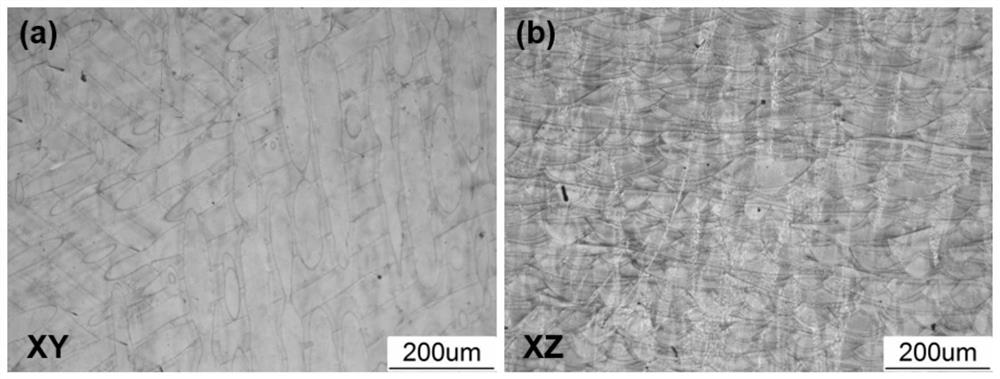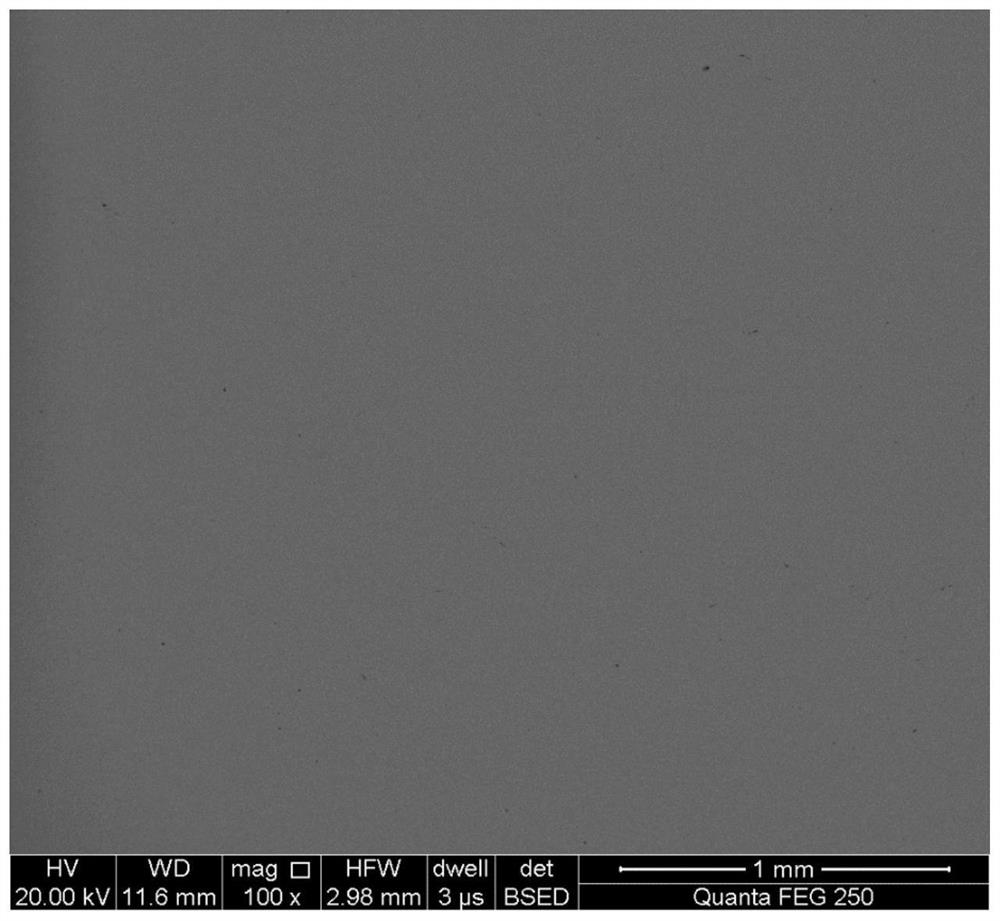A method to eliminate 3D nickel -based high -temperature alloy cracks
A nickel-based superalloy, 3D printing technology, applied in the direction of improving energy efficiency, metal processing equipment, process efficiency, etc., can solve the problems of high residual stress of formed parts, unable to suppress cracks, poor welding performance, etc., to achieve the elimination of 3D Effects of printing cracks, reducing crack sensitivity, and improving compositional and organizational uniformity
- Summary
- Abstract
- Description
- Claims
- Application Information
AI Technical Summary
Problems solved by technology
Method used
Image
Examples
Embodiment 1
[0079] The method of the present invention is used for the following René 104 nickel-based superalloy, and the added mass fraction is 0.08% rare earth Sc element, and the alloy weight percent is:
[0080] 20.6Co~13Cr~3.4Al~3.9Ti~3.8Mo~2.1W~2.4Ta~0.9Nb~0.05Zr~0.03B~0.04C~0.08Sc~the balance is Ni, and argon gas is used after preparing the master alloy of the alloy Atomized rapid solidification powder, through air classification and ultrasonic vibrating sieve powder sieve 15 ~ 53μm alloy powder.
[0081] Apply the present invention to SLM forming René 104 nickel-based superalloy, first dry the sieved René 104 nickel-based superalloy powder in a vacuum oven at 120°C for 4 hours, heat the substrate to 170°C, and dry the dried powder Put it into the powder supply cylinder and spread the powder, and feed argon or nitrogen into the working chamber until the oxygen content is lower than 100ppm. After entering the printing process, the steps of powder spreading and laser scanning powde...
Embodiment 2
[0086] The method of the present invention is used for the following René 104 nickel-based superalloy, and the addition mass fraction is 0.12% rare earth Y element, and the alloy weight percentage is:
[0087] 20.6Co~13Cr~3.4Al~3.9Ti~3.8Mo~2.1W~2.4Ta~0.9Nb~0.05Zr~0.03B~0.04C~0.12Y~The balance is Ni, and helium is used after preparing the master alloy of the alloy Atomized rapid solidification powder, through air classification and ultrasonic vibrating sieve powder sieve 15 ~ 53μm alloy powder.
[0088] Apply the present invention to SLM forming René 104 nickel-based superalloy, first dry the sieved René 104 nickel-based superalloy powder in a vacuum oven at 120°C for 4 hours, heat the substrate to 170°C, and dry the dried powder Put it into the powder supply cylinder and spread the powder, and feed argon or nitrogen into the working chamber until the oxygen content is lower than 100ppm. After entering the printing process, the steps of powder spreading and laser scanning powd...
Embodiment 3
[0093] The method of the present invention is used for the following René 104 nickel-based superalloy, the addition mass fraction is 0.06% rare earth Sc element and 0.08% rare earth Y element, and the alloy weight percent is:
[0094] 20.6Co~13Cr~3.4Al~3.9Ti~3.8Mo~2.1W~2.4Ta~0.9Nb~0.05Zr~0.03B~0.04C~0.06Sc~0.08Y~the balance is Ni, after preparing the master alloy of the alloy Argon atomization is used for rapid solidification to produce powder, and alloy powder of 15-53 μm is sieved through airflow classification and ultrasonic vibrating sieve powder.
[0095] Apply the present invention to SLM forming René 104 nickel-based superalloy, first dry the sieved René 104 nickel-based superalloy powder in a vacuum oven at 120°C for 4 hours, heat the substrate to 170°C, and dry the dried powder Put it into the powder supply cylinder and spread the powder, and feed argon or nitrogen into the working chamber until the oxygen content is lower than 100ppm. After entering the printing proce...
PUM
| Property | Measurement | Unit |
|---|---|---|
| particle diameter | aaaaa | aaaaa |
| particle diameter | aaaaa | aaaaa |
| yield strength | aaaaa | aaaaa |
Abstract
Description
Claims
Application Information
 Login to View More
Login to View More - R&D
- Intellectual Property
- Life Sciences
- Materials
- Tech Scout
- Unparalleled Data Quality
- Higher Quality Content
- 60% Fewer Hallucinations
Browse by: Latest US Patents, China's latest patents, Technical Efficacy Thesaurus, Application Domain, Technology Topic, Popular Technical Reports.
© 2025 PatSnap. All rights reserved.Legal|Privacy policy|Modern Slavery Act Transparency Statement|Sitemap|About US| Contact US: help@patsnap.com



